The 5 biggest extinctions
The extinction of the dinosaurs was not the only mass extinction. Since there has been life on Earth, several occurred, and all the separations on the geologic timescale (such as the Cretaceous, Jurassic, and Triassic) are based on mass extinctions.
Unlike local extinction, which is the extinction of a population in a particular region, mass extinction can be defined as a geological event characterized by the extinction of numerous species, greatly reducing the diversity of life on the entire planet.
These phenomena are usually associated with a combination of factors, and their causes vary from one event to another, being caused by asteroids, climate change, volcanic eruptions, changes in sea level, movement of continents, and others. However, the older the fossil, the more difficult it is to find and obtain information about the local geology. As a result, it is not easy to know exactly what caused each extinction, and much of what we know today is based mainly on theoretical studies.
Despite being known as major catastrophes, extinctions accelerated the evolution of life on Earth. These events wiped out the dominant groups and made way for new inhabitants.
There have been many major extinctions, and it is difficult to define exactly what constitutes a “major” event, and different paleontologists have different opinions about how many major extinctions occurred. However, there is a consensus that there have been 5 mass extinctions:
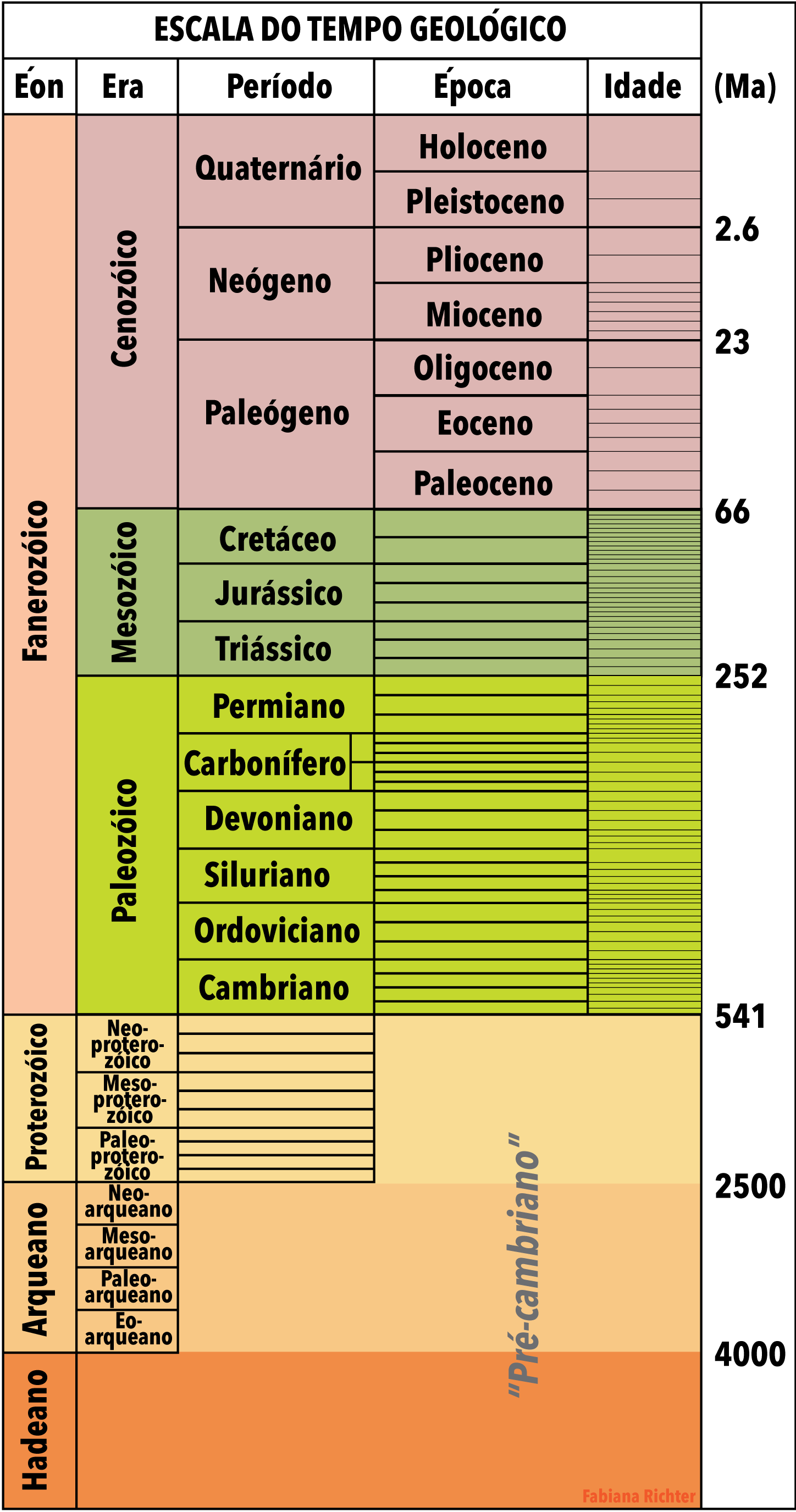
Paleozoic Era
The Paleozoic Era is known for the two most important events in the history of animal life. First, there was a big diversification known as the Cambrian Explosion. During this period, the first marine invertebrates appeared, such as trilobites, mollusks, starfish, corals, etc. Fish first appeared in fresh water during the Ordovician period, about 54 million years after the Cambrian explosion.
During the Ordovician, the algae that emerged were on the coasts, sometimes submerged and sometimes out of the water, so they began to adapt to life on land. As a result, mosses began to grow on rocks and spread when carried by the wind, giving rise to land plants during the Silurian period.
In the Devonian period, about 27 million years after the Silurian, forests began to grow. The first insects and amphibians also appeared during this period. About 57 million years later, during the Carboniferous Period, the first reptiles appeared, and in the Permian period, 60 million years later, the world’s greatest extinction took place.
Ordovician Extinction
The end of the Ordovician period was marked by the second-largest mass extinction, almost twice as severe as the dinosaur extinction (which we will talk about later) and second only to the Permian extinction, which would occur many thousands of years later. This extinction caused the disappearance of about 85% of marine species.
There is much controversy about what caused the extinction, but the most accepted theory so far is that it was the result of falling carbon dioxide levels, which triggered a rapid global cooling. This caused sea levels to drop, reducing the habitat available to many organisms. The Earth was covered in ice, causing marine life to die out or adapt by creating an ecosystem resistant to the cold water.
A second phase of extinction occurred due to global warming, which caused sea levels to rise and glaciers to shrink. The second phase is associated with a large drop in oxygen and toxicity of the water.
However, in May 2020, studies suggested that the cause of the mass extinction may actually have been global warming related to volcanic eruptions and low oxygen levels in the atmosphere — and not due to cooling and glaciation, as previously thought. Therefore, data and studies are still lacking for a single accurate theory to be accepted.
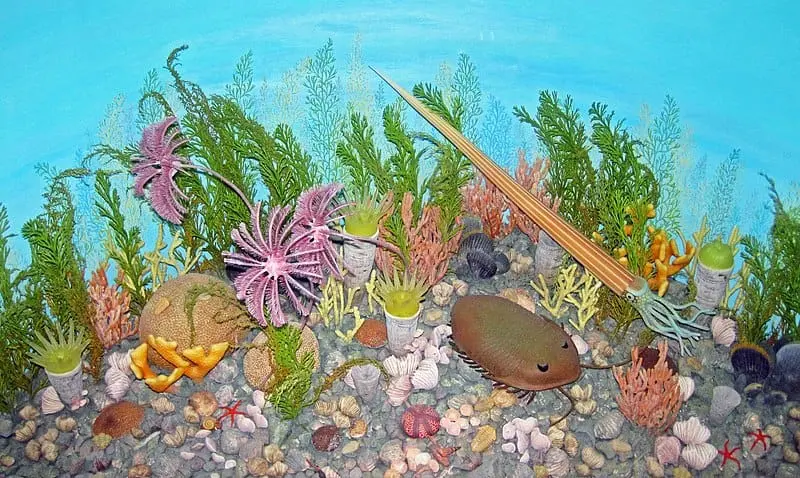
Late Devonian Extinction
The causes of the extinction of 70% of all marine life are still unknown, but the most supported theories are, as with the previous extinction, falling temperatures, lack of oxygen, and poisoning of the seas. The duration of this event is uncertain, but estimates range from 20-25 million years, and there is evidence of approximately eight to ten catastrophes during this period.
During this time, huge coral reefs, fish, and sharks appeared. The first amphibians and arthropods appeared on land. Plants grew from 30 cm to huge 30 m since the beginning of this period.
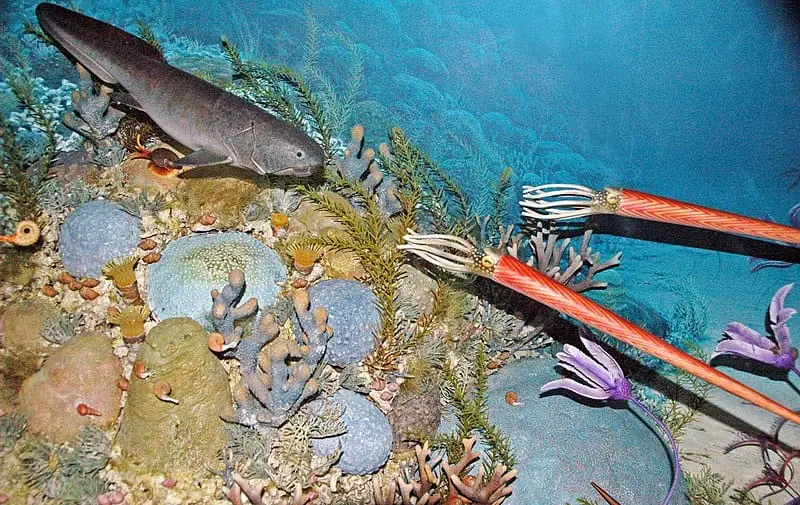
Permian Extinction
This was the world’s largest mass extinction event, eliminating 95% of marine animals and 70% of land animals, and the only known mass extinction event that also eliminated insects. This extinction also took the longest for biodiversity to recover, taking up to 30 million years to return to its previous state.
Because of its impact, this extinction was described by paleontologist Douglas H. Erwin as the Mother of all mass extinctions
.
Evidence shows that there were three phases to this event, and the scientific consensus is that the causes were high temperatures, high oxygen concentrations, and ocean acidification due to excess carbon dioxide released by the eruption of the Siberian Traps (large volcanoes whose eruptions lasted about 2 million years, until the end of the Permian).
During the Permian, plants, animals, and insects had evolved much further since the last extinction, and there were already many large and small amphibians and lizards.
The Arcosaurus and especially the Terapsids were the main land vertebrates.
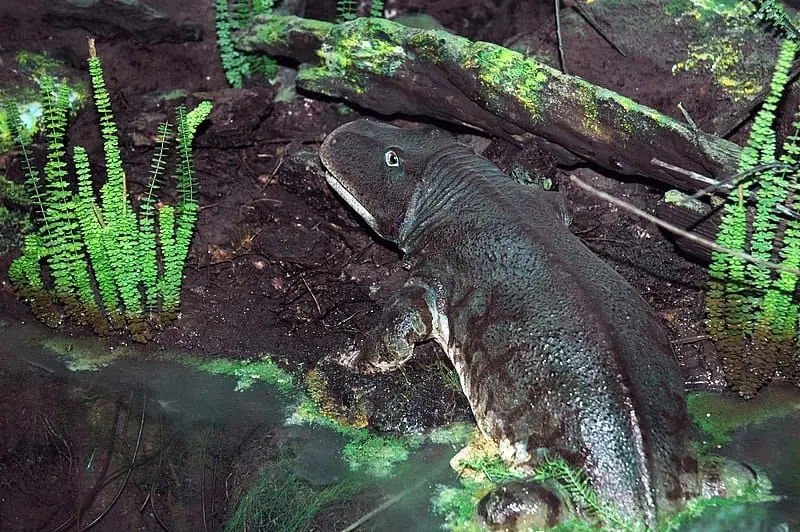
Mesozoic Era
The Mesozoic Era begins and ends with the appearance and extinction of the dinosaurs and pterosaurs. It is divided into three periods: Triassic, Jurassic and Cretaceous. During this era, many climatic changes and earthquakes occurred. In the Triassic period, the entire surface of the Earth was united in a single continent called Pangea. However, by the end of the dinosaur era, during the Cretaceous period, many continents had separated.
Triassic Extinction
The first Mesozoic extinction had a major impact on terrestrial vertebrates and marine invertebrates. Approximately 70% of all species became extinct.
In the sea, reef faunas were wiped out, and ammonoids — a type of mollusk — and echinoderms such as starfish were nearly extinct. The diversity of marine fish and reptiles declined, but not as much as that of other marine animals.
On land, all the archosaurs, many therapsids, and large amphibians of the time also disappeared. But the plants, dinosaurs and pterosaurs were unaffected, allowing them to become the dominant animals of the Jurassic and Cretaceous periods.
There are several theories that try to explain the reason for the extinction, but all of them are refutable. The most accepted theory, however, is that large volcanic eruptions released enormous amounts of carbon dioxide and sulfur dioxide, causing intense global warming and acidification of the oceans, followed by a significant cooling. However, the effects of such processes on the animal and plant communities of the time are not well understood.
During the Triassic, amphibians were mainly represented by animals similar to large salamanders, and although modern amphibians such as frogs appeared at this time, they did not become more common until the Jurassic.
A subgroup of the surviving archosaurs, the dinosaurs, first appeared in the Triassic, as did the first mammals descended from the terapsids, the pterosaurs, and the flowers.
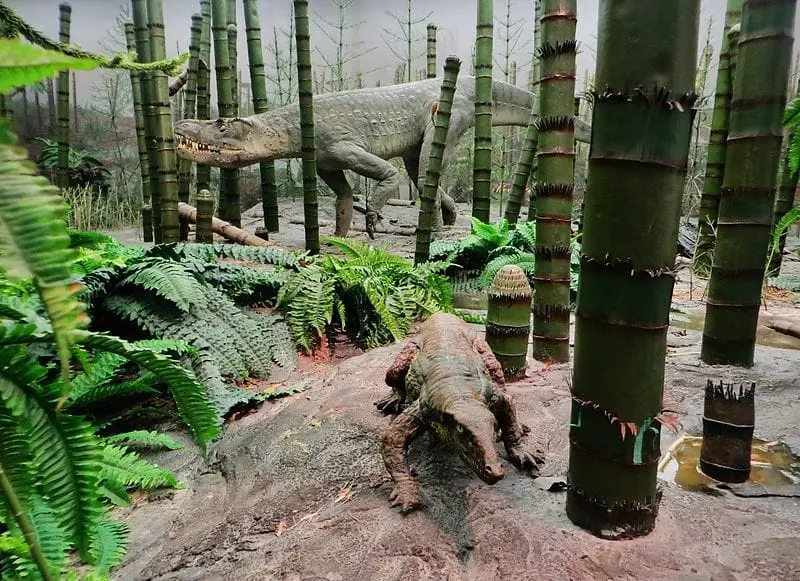
Cretaceous Extinction
This is by far the best known extinction in the world, and it wiped out 75% of the species.
The most accepted theory for this event involves the fall of an asteroid in Mexico. According to several studies, the asteroid was more than 10 kilometers in diameter, and its impact with the Earth released energy equivalent to the explosion of five billion atomic bombs, like those used on Hiroshima and Nagasaki in 1945. The impact would have thrown up a large number of particles that would have blocked sunlight and also triggered a series of consequential tragedies on Earth.
Without sunlight, aquatic and terrestrial plants that depend on photosynthesis declined or died out. As a result, the animals that depended on plants for survival became extinct. And without the herbivores, carnivores like Tyrannosaurus Rex ran out of food. This chain reaction drove the dinosaurs to extinction.
The only animals that managed to survive were the small birds, mammals , animals that were omnivorous, insectivorous, or scavengers — probably because their food sources increased or because they were animals that did not need large amounts of food. Animals that lived at the bottom of the oceans and fed on detritus were also able to survive.
Although the asteroid theory is quite convincing, new discoveries are made regularly and there is still no final consensus on what actually happened.
The elimination of the dominant Cretaceous groups allowed other animals to take their place, resulting in a remarkable replacement of dinosaurs by mammals. All the animals that survived the last extinction, such as birds, reptiles, fish, and invertebrate insects, evolved and diversified rapidly without the former dominant animals.
There is still debate about the causes of all the mass extinctions, but the main ones are climate change, major continental shifts that caused chain reactions such as large volcanic eruptions that spread toxic components into the air and water, and extraterrestrial events such as falling meteors and asteroids.
As much as it may seem that there have been many catastrophes and extinctions, it is worth noting that the interval between each one is millions of years. Likewise, the animals of each of these eras did not die out in a matter of days or months. Total extinction was a process that took thousands of years.
Holocene Extinction
A study by paleontologists Sepkoski and Raup confirmed that since 1982 we have been on the path to a sixth mass extinction.
It will be the result of human activity, driven by population growth and excessive consumption of natural resources. According to IPBES (Intergovernmental Platform on Biodiversity and Ecosystem Services), more than 800 species have disappeared in the last 500 years, at a rate of 1,000 to 10,000 times faster than without humans.
A 2020 study by researchers at the University of Arizona in the United States estimates that one in three plant and animal species could disappear in the next 50 years as a result of climate change. Not to mention deforestation, poaching, and ocean pollution, which make these numbers even more alarming. So it is important that we take care of our planet!
Read more:
Ordovician–Silurian extinction events
Permian–Triassic extinction event
Triassic–Jurassic extinction event
Cretaceous–Paleogene extinction event
Recent responses to climate change reveal the drivers of species extinction and survival
Accelerated modern human–induced species losses: Entering the sixth mass extinction
Mammal diversity will take millions of years to recover from the current biodiversity crisis
